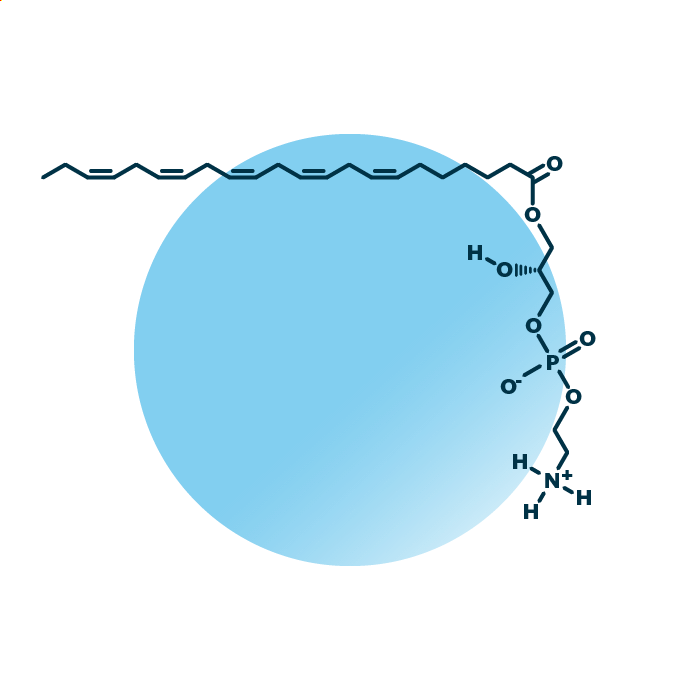About the structure and biological function of LPE
Structure. Lyso-phosphatidyl-ethanolamines (lysocephalins, LysoPtdEtn, LysoPE, or LPE) belong to the group of ester phospholipids within the phospholipids. Their structure consists of a glycerol backbone linked to a fatty acid and a phosphoethanolamine molecule. The fatty acid can be of variable length, hydroxylated, and contain double bonds.
Function. Lyso-phosphatidyl-ethanolamines are involved in cellular processes such as differentiation and migration of certain neuronal cells, but also of various cancer cells. In plants, LPEs function as inhibitors for a key enzyme in membrane lipid degradation, thus retarding senescence of leaves, flowers, and fruits. They are used commercially to stimulate ripening and extend shelf-life of fruit, and increase vase life of cut flowers. Further, LPE lipids serve as precursors for phosphatidyl-ethanolamines.



